Ada
A Project by Jenny sabin studiO, in collaboration with Microsoft Research
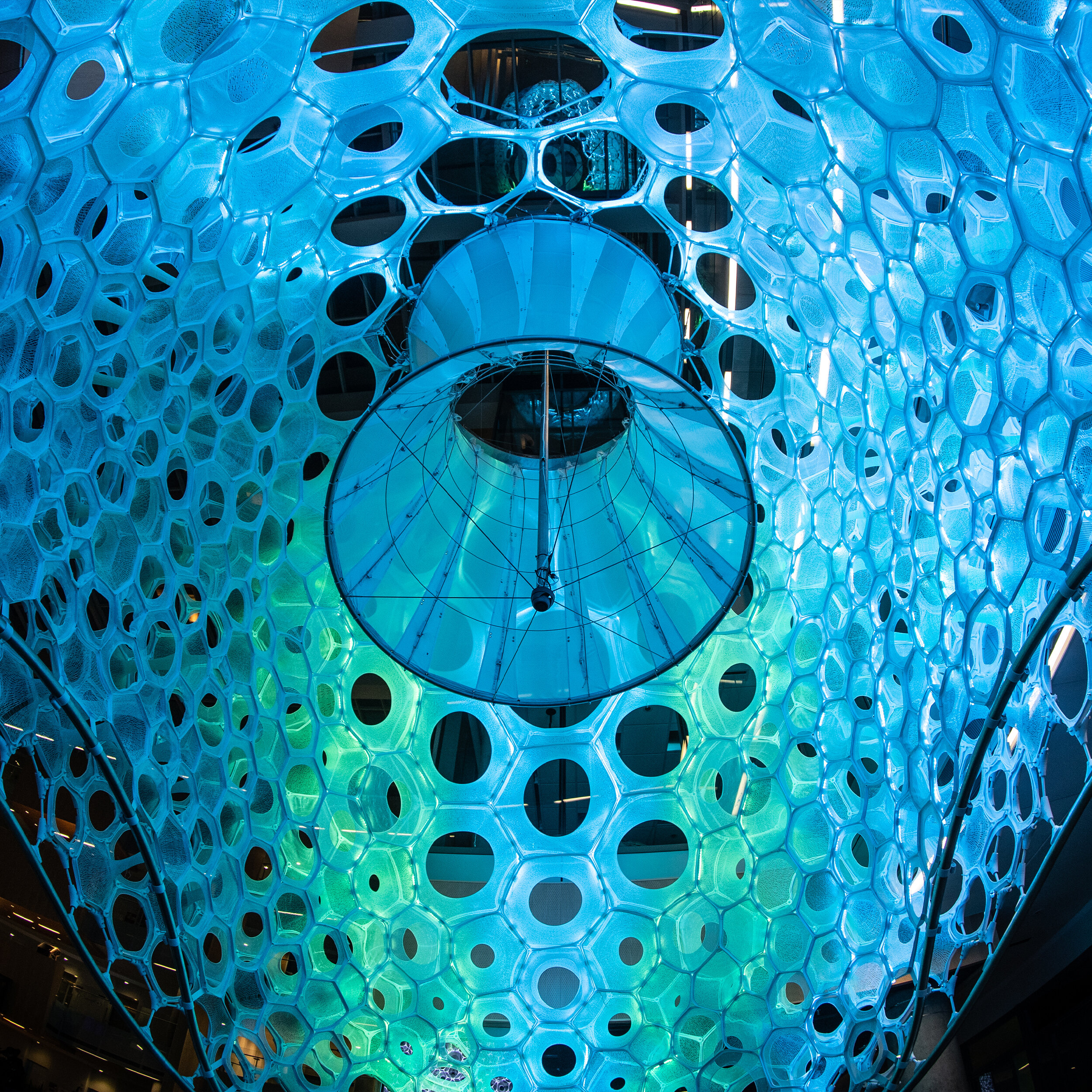
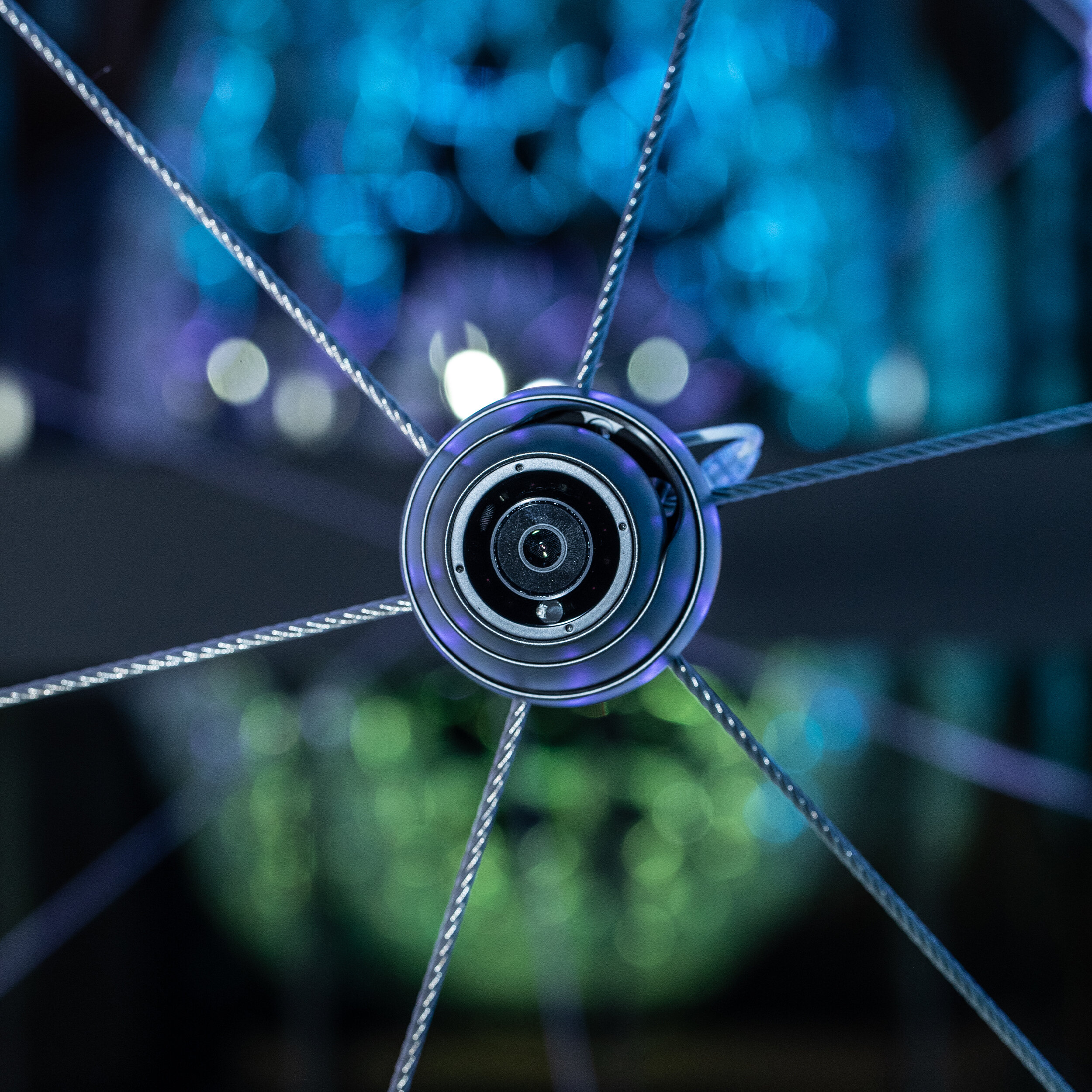
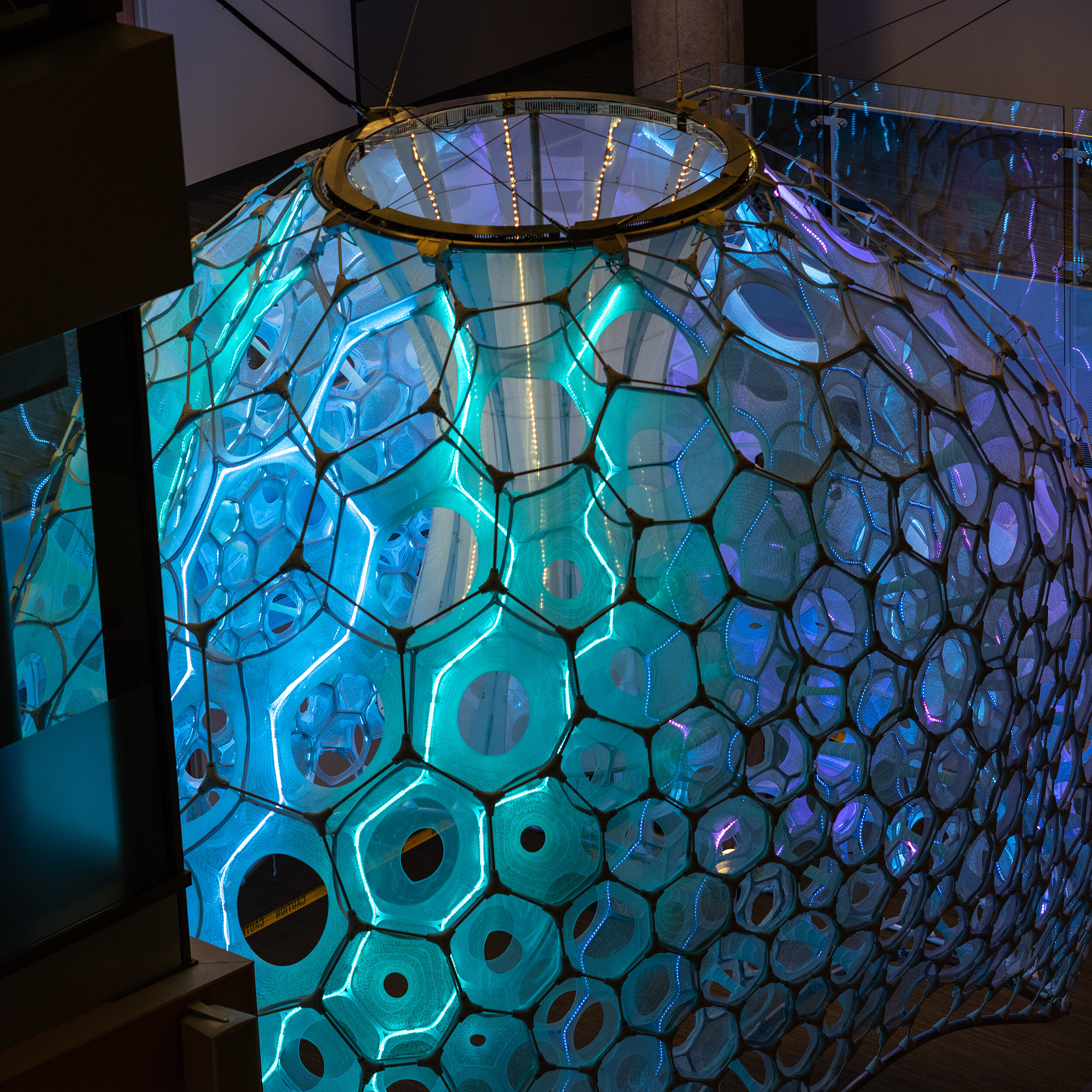
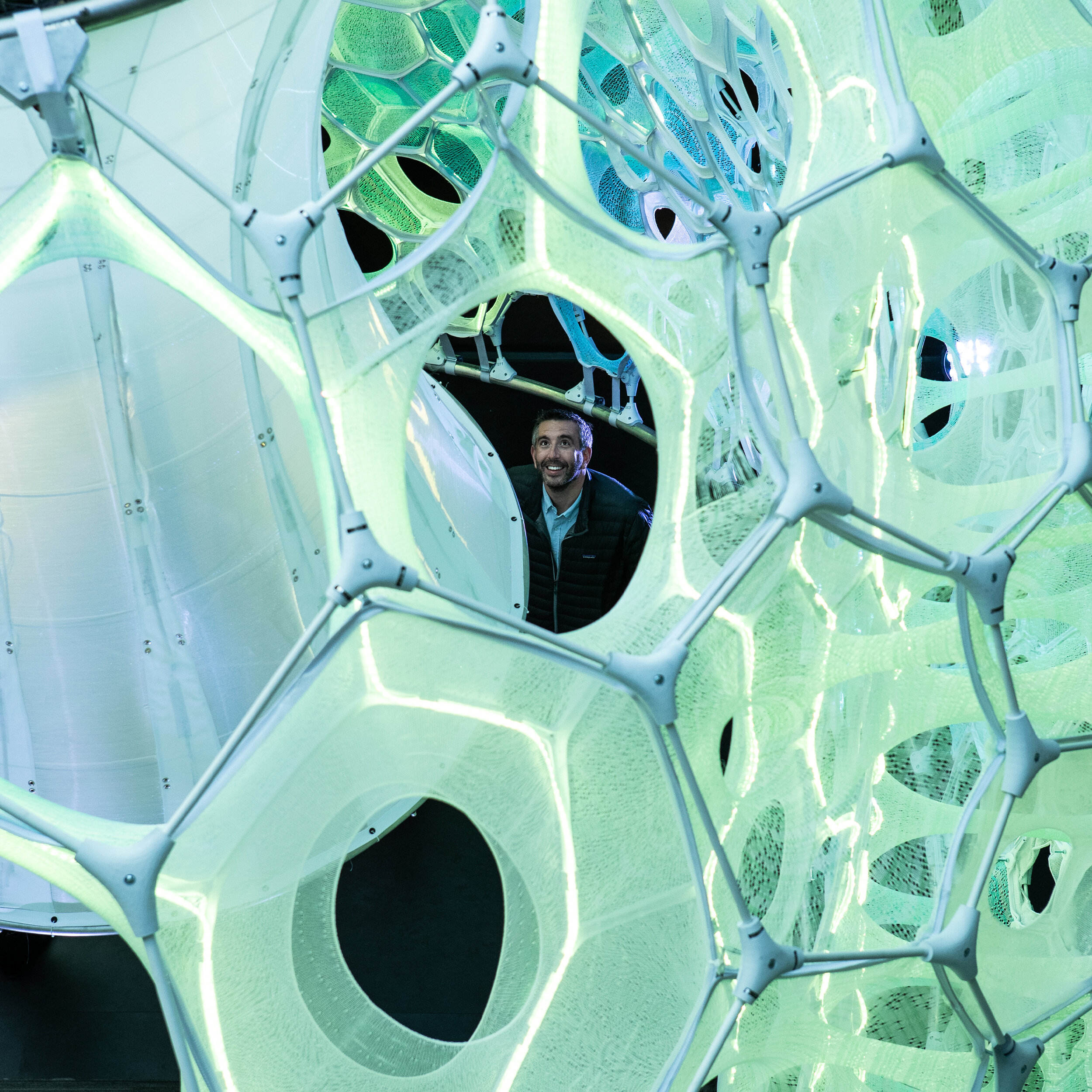
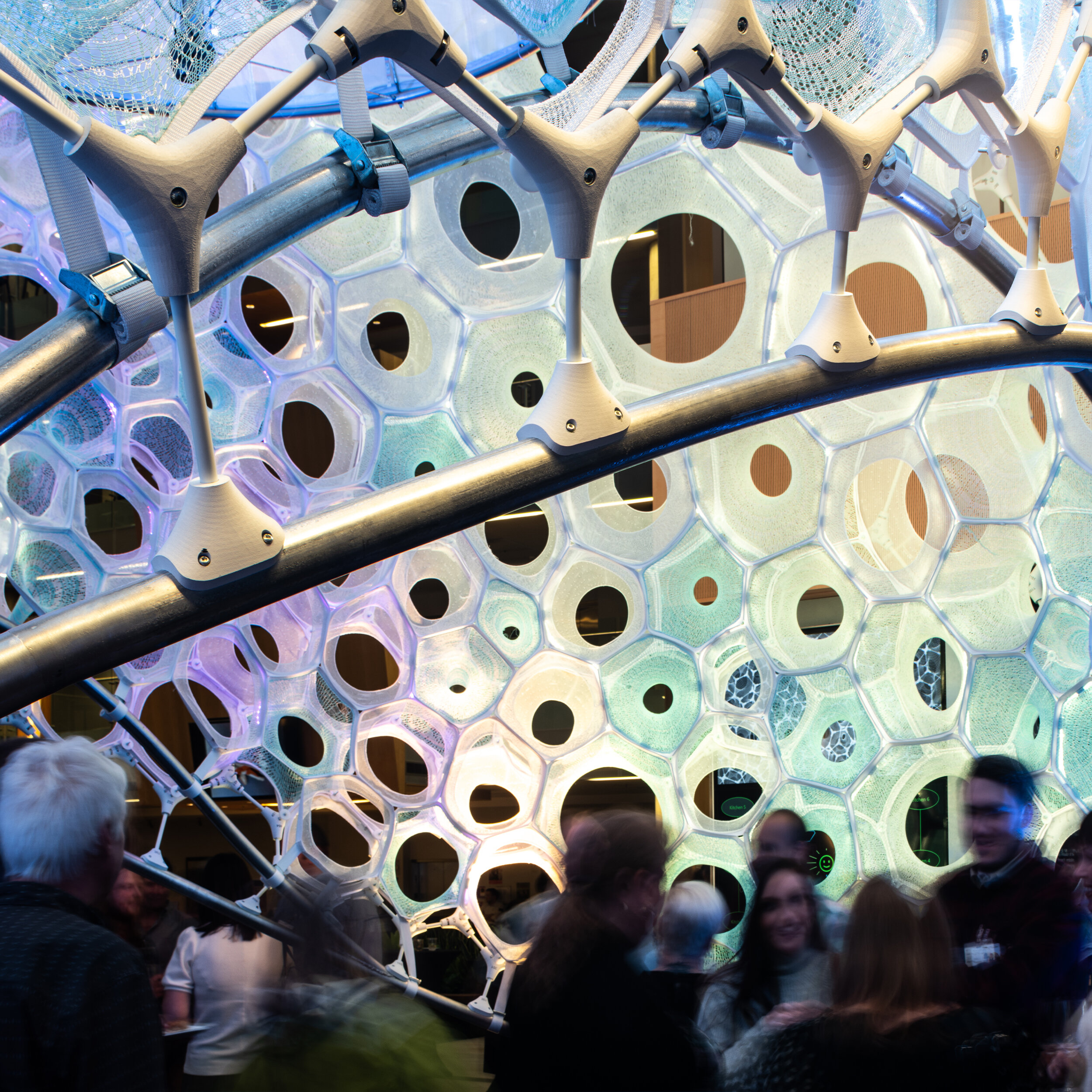
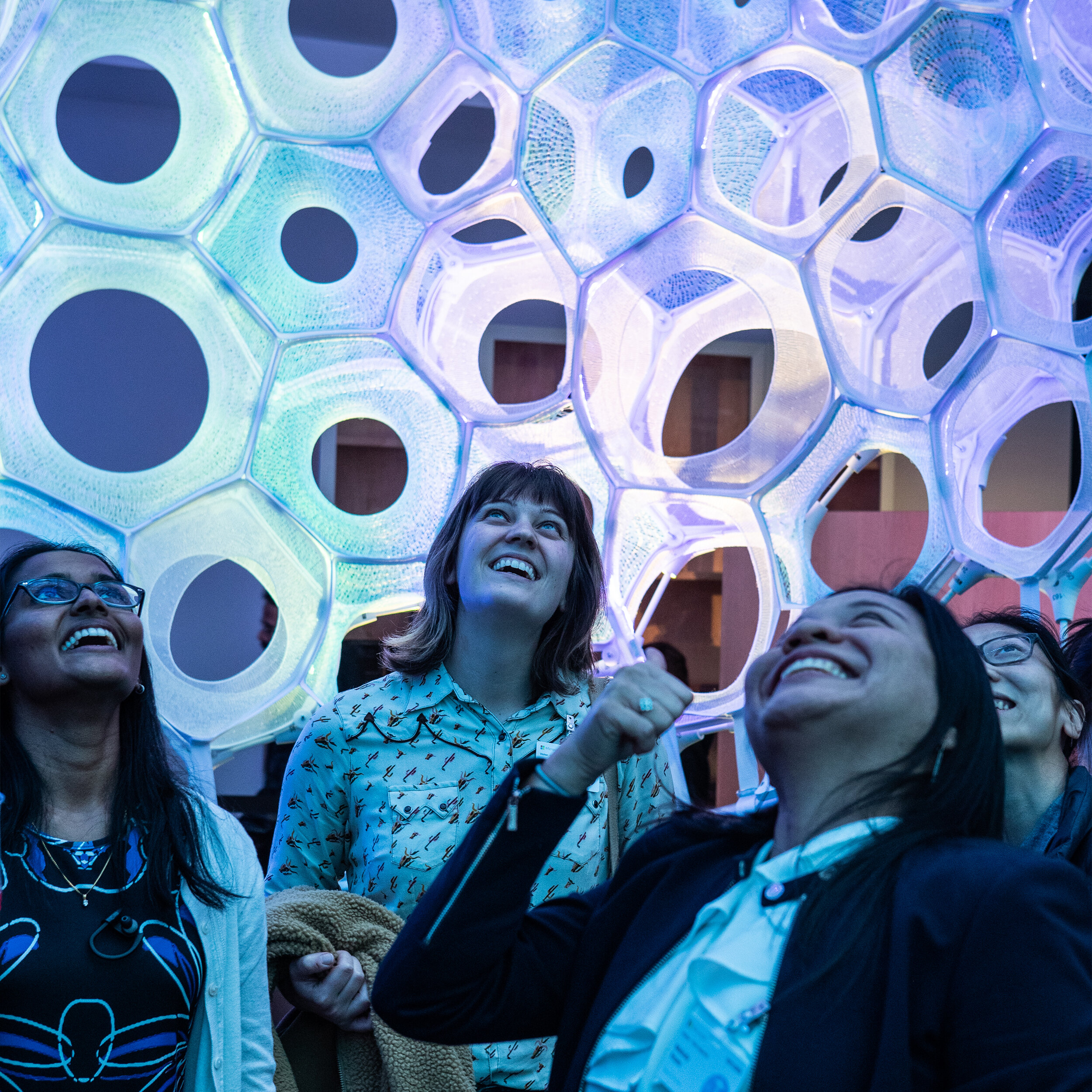
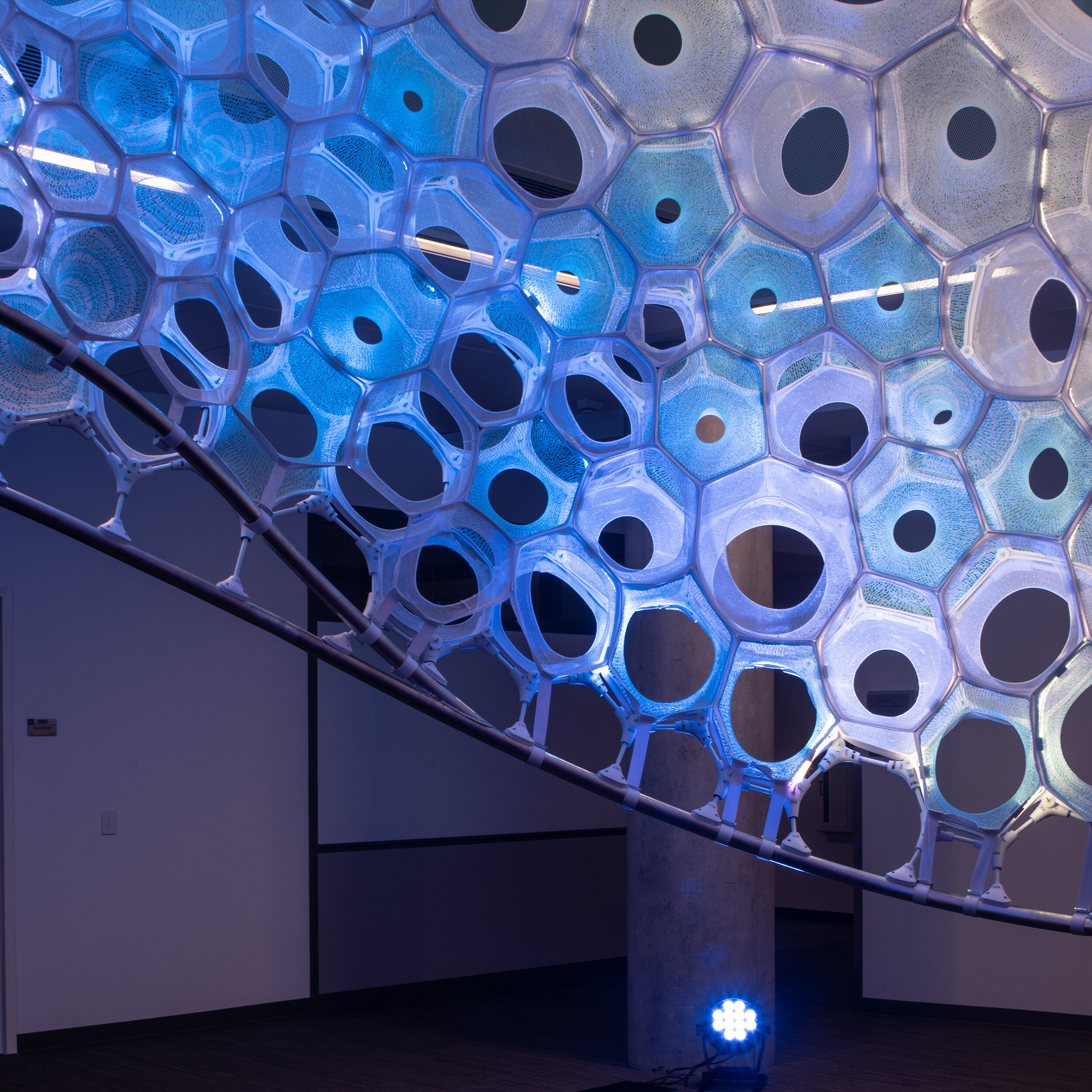
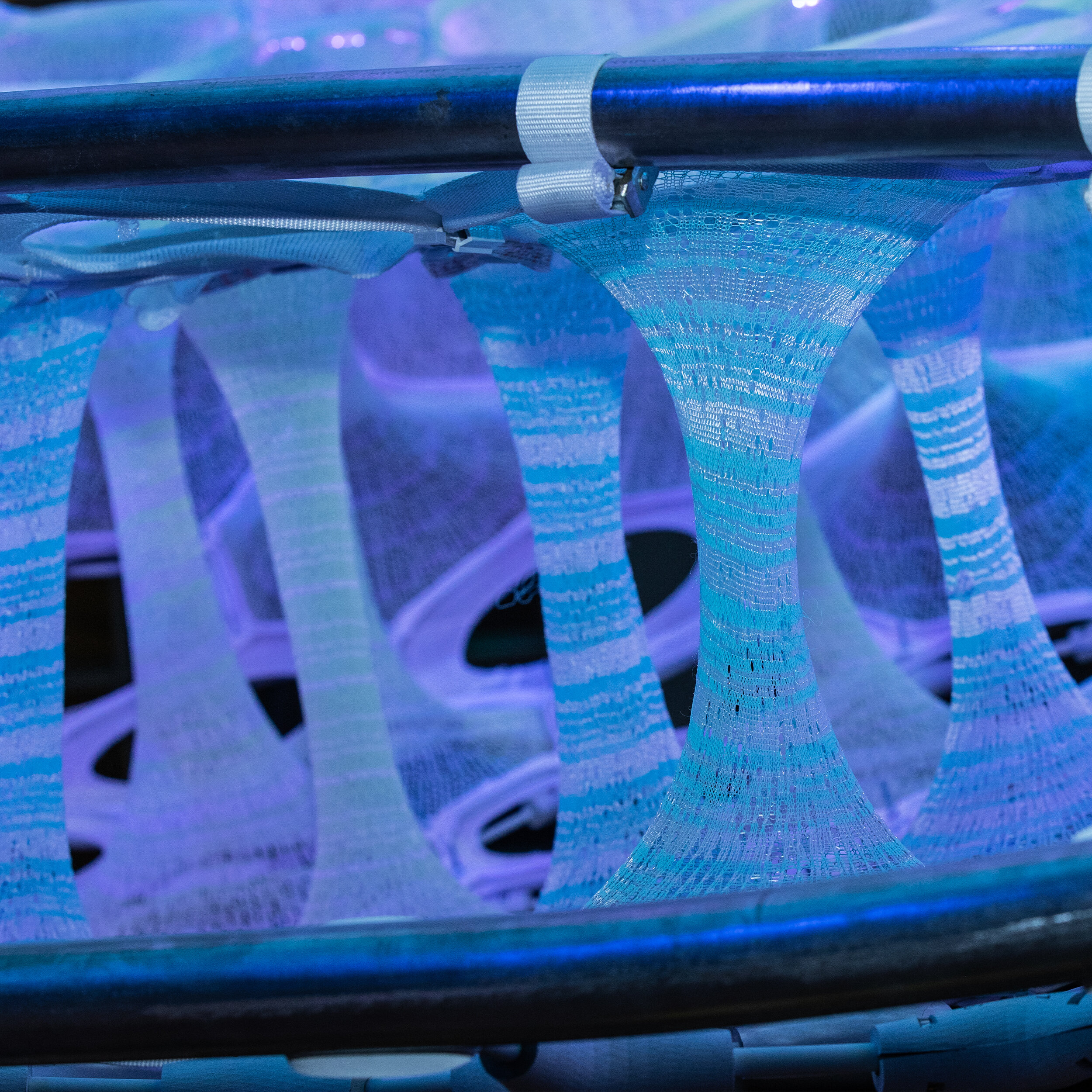

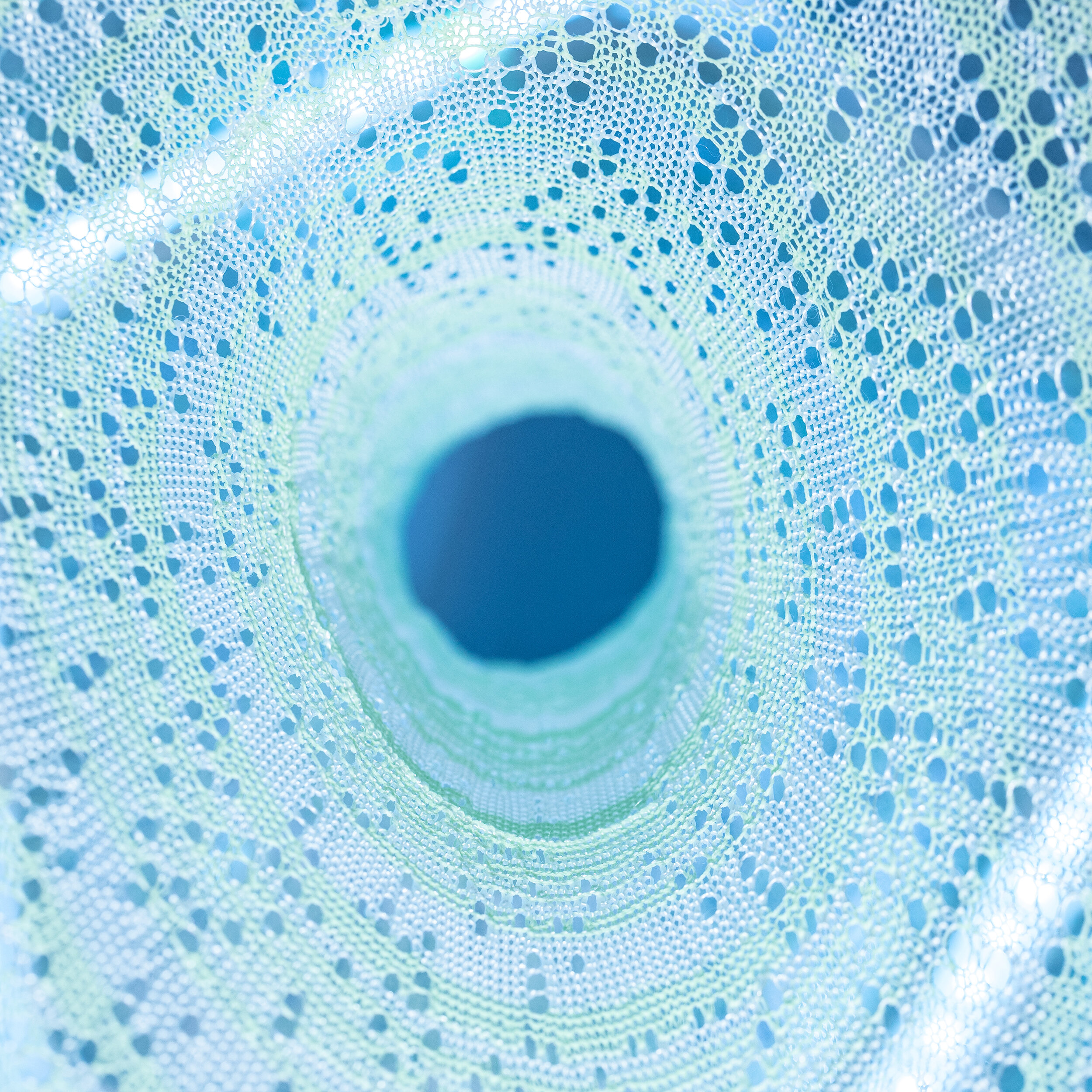

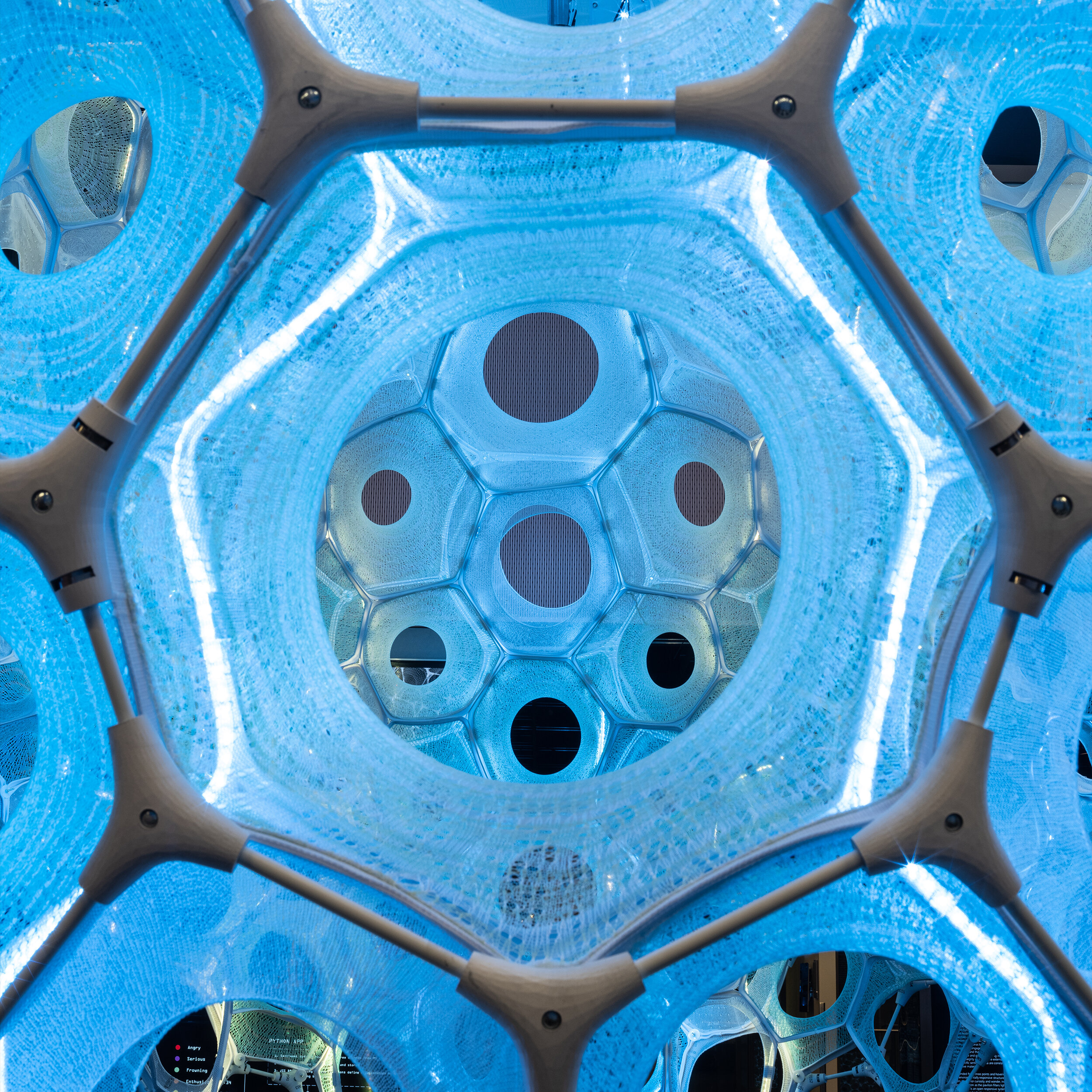
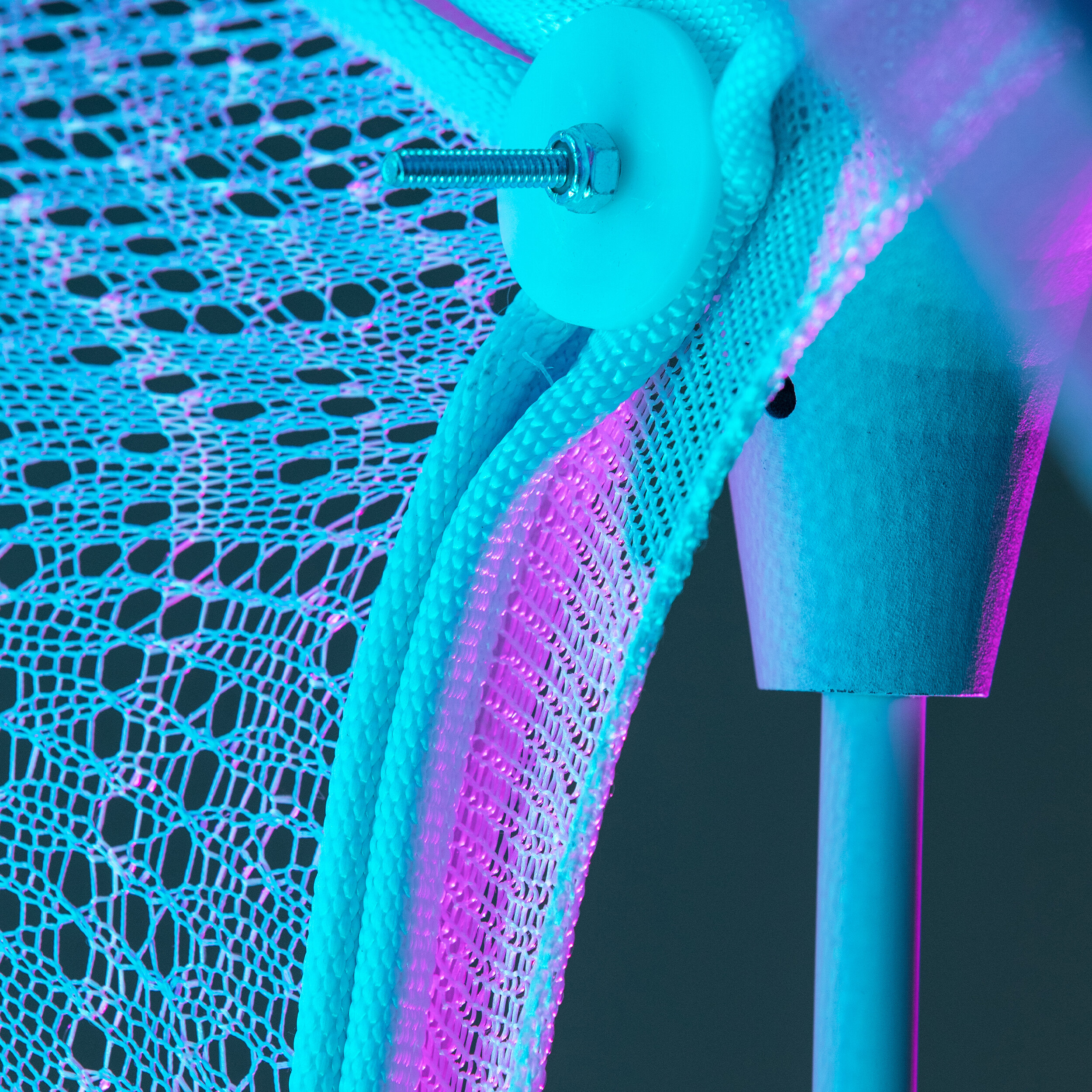
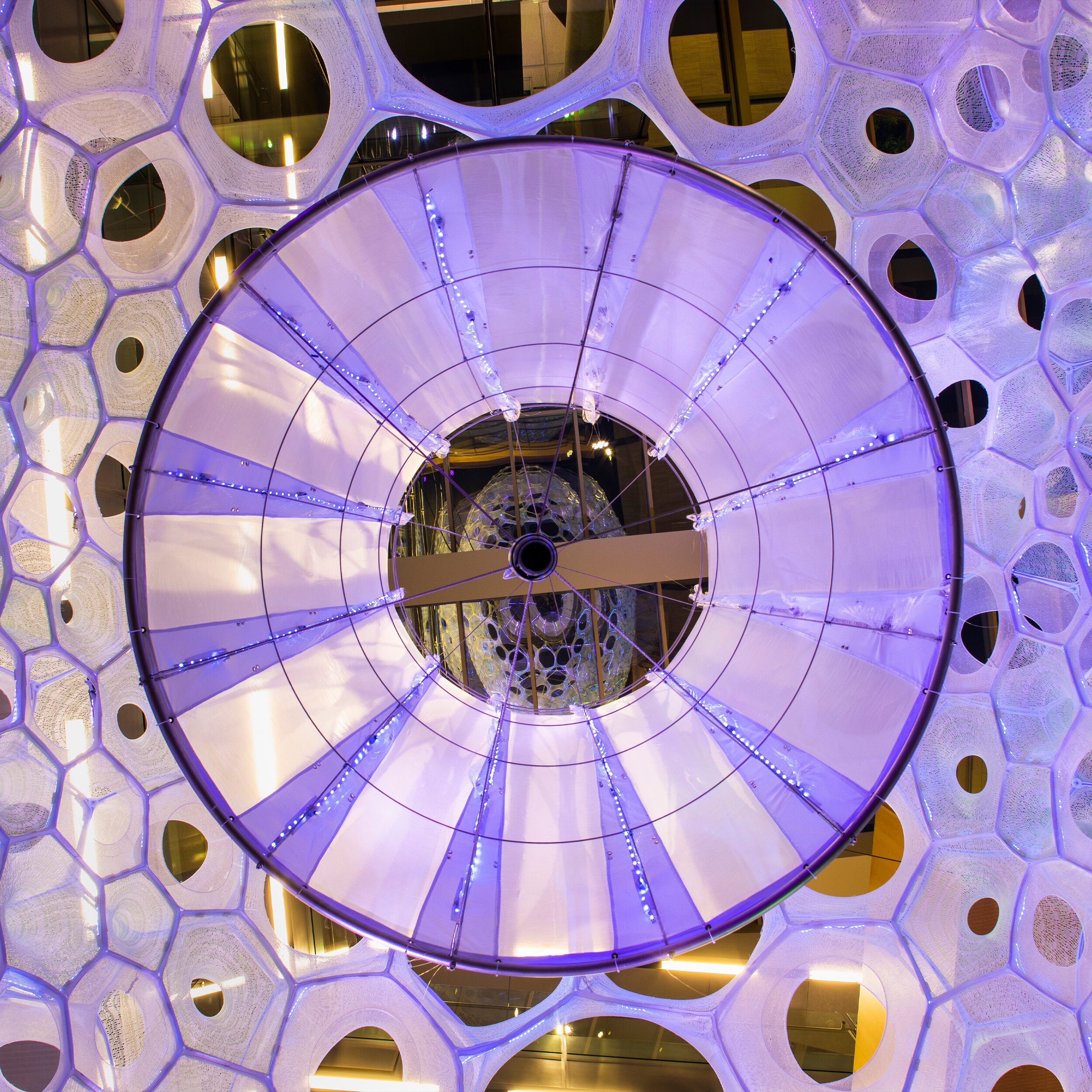
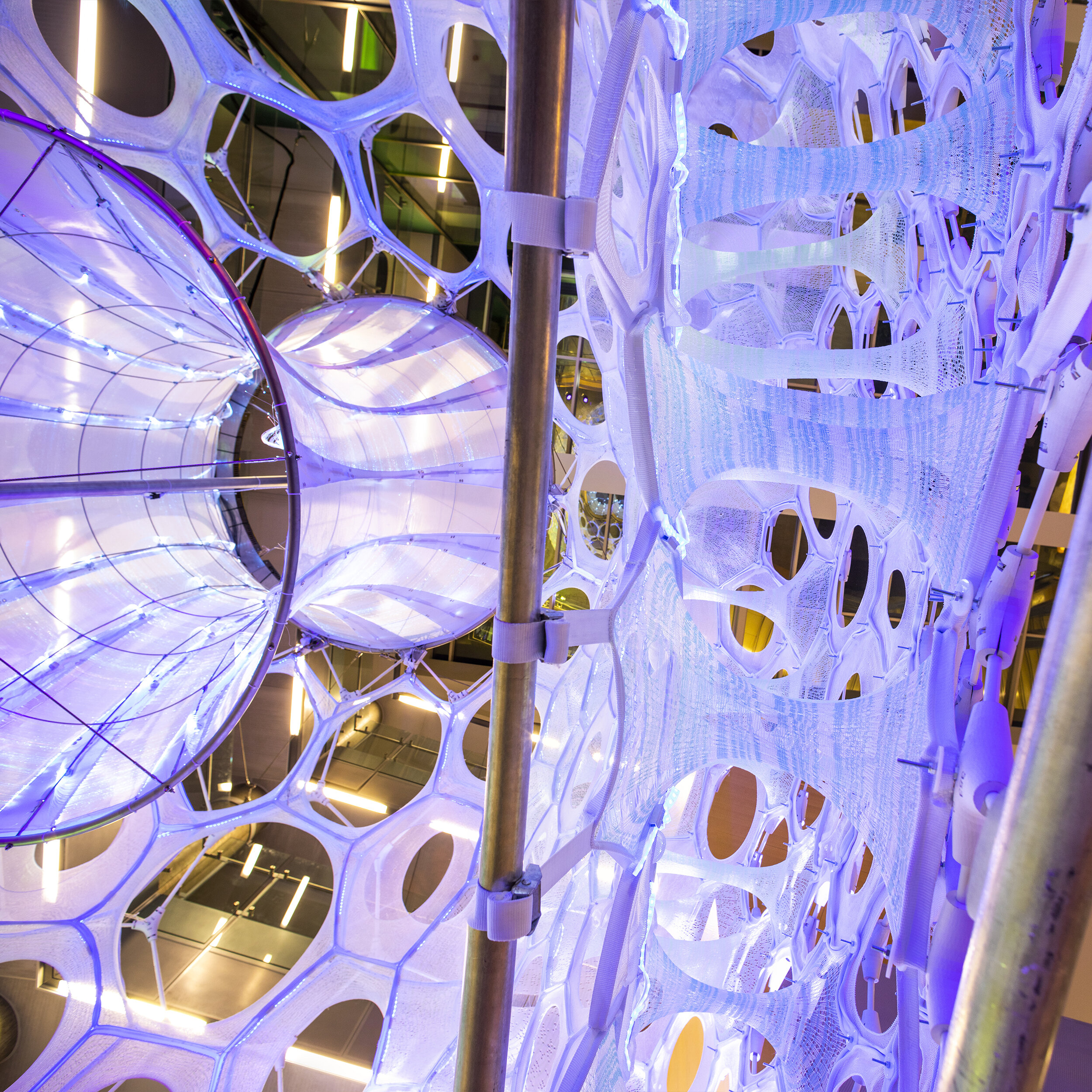
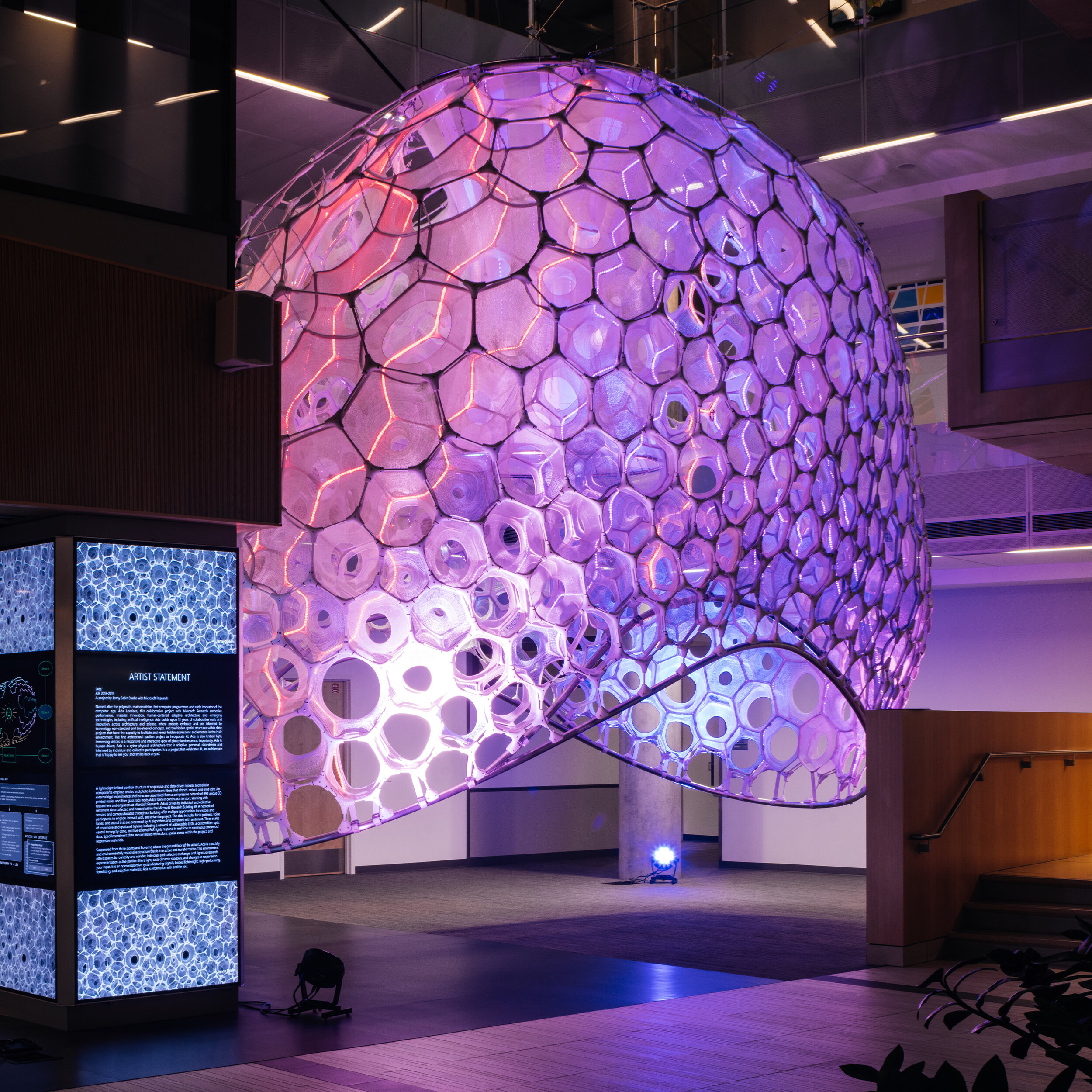
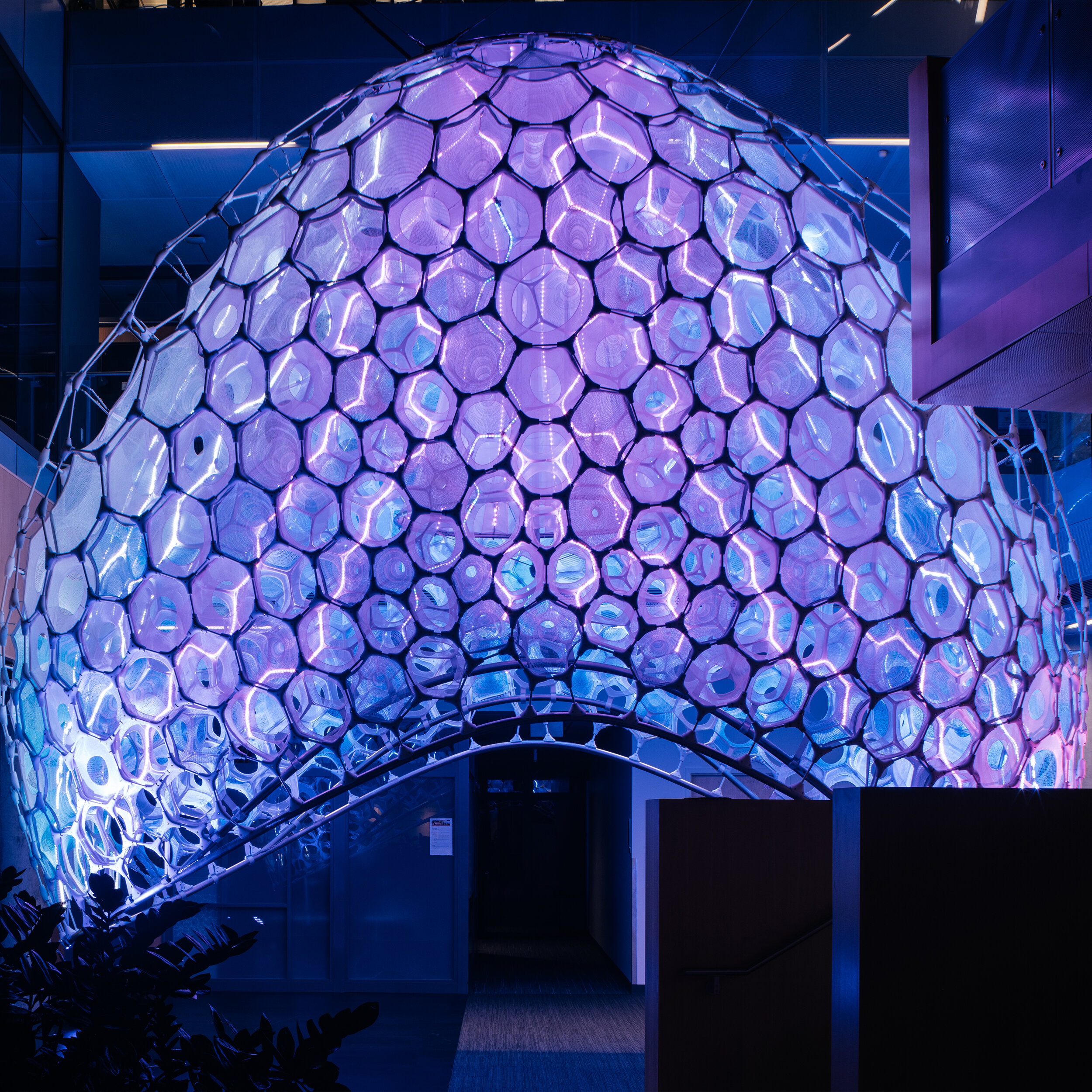
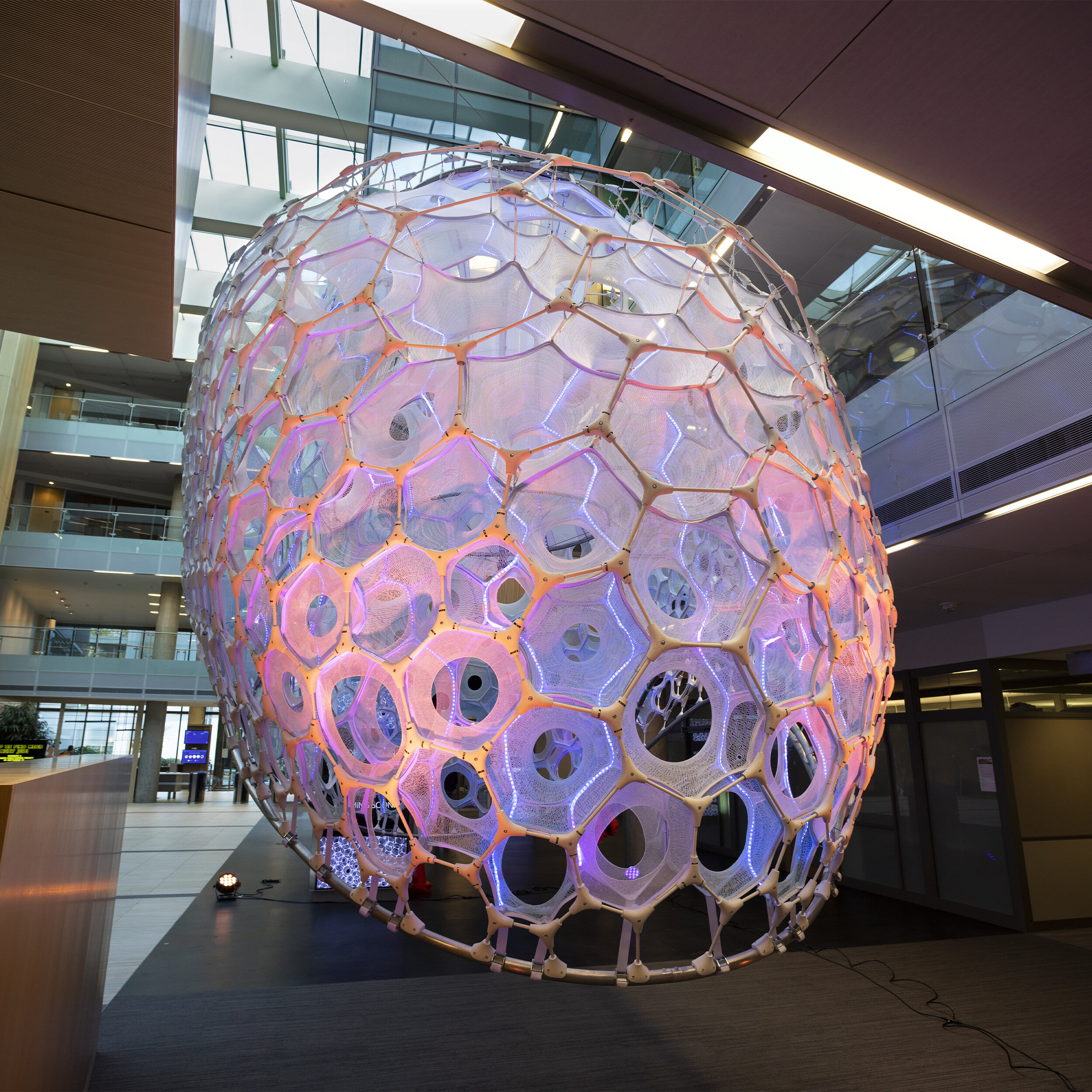
Microsoft Research Artist in Residence (AIR) 2018-2019
Photos by John Brecher and Jake Knapp for Microsoft
Named after the polymath, mathematician, first computer programmer, and early innovator of the computer age, Ada Lovelace, this collaborative project with Microsoft Research embodies performance, material innovation, human-centered adaptive architecture and emerging technologies, including artificial intelligence. Ada builds upon 13 years of collaborative work and innovation across architecture and science, where projects embrace and are informed by technology, non-standard and bio-steered concepts, and the hidden spatial structures within data; projects that have the capacity to facilitate and reveal hidden expressions and emotion in the built environment. The first architectural pavilion project to incorporate AI, Ada is also knitted light, immersing visitors in a responsive and interactive glow of photo-luminescence. Importantly, Ada is human-driven; Ada is a cyber physical architecture that is adaptive, personal, data-driven and informed by individual and collective participation. It is a project that celebrates AI, an architecture that is ‘happy to see you’ and ‘smiles back at you’.
A lightweight knitted pavilion structure of responsive and data-driven tubular and cellular components employs textiles and photo-luminescent fibers that absorb, collect, and emit light. An external rigid experimental shell structure assembled from a compressive network of 895 unique 3D printed nodes and fiber glass rods holds Ada’s form in continuous tension. Working with researchers and engineers at Microsoft Research, Ada is driven by individual and collective sentiment data collected and housed within the Microsoft Research Building 99. A network of sensors and cameras located throughout building offer multiple opportunities for visitors and participants to engage, interact with, and drive the project. The data includes facial patterns, voice tones, and sound that are processed by AI algorithms and correlated with sentiment. Three scales of responsive and gradated lighting including a network of addressable LEDs, a custom fiber optic central tensegrity cone, and five external PAR lights respond in real time to continuous streams of data. Specific sentiment data are correlated with colors, spatial zones within the project, and responsive materials.
Suspended from three points and hovering above the ground floor of the atrium, Ada is a socially and environmentally responsive structure that is interactive and transformative. This environment offers spaces for curiosity and wonder, individual and collective exchange, and rigorous research experimentation as the pavilion filters light, casts dynamic shadows, and changes in response to your input. It is an open responsive system featuring digitally knitted lightweight, high-performing, formfitting, and adaptive materials. Ada is information with and for you.
As published in:
The AI Blog, Microsoft
The Cornell Chronicle
Geek Wire
Architect Magazine
DesignBoom
SciTech Daily
Archinect
Cornell Daily Sun
URDesign
CNBeta
Mirage News
Neowin
Petri
WinBuzzer
Wallpaper
Jenny Sabin Studio Team
Architectural Designer and Artist: Jenny E. Sabin
Project Manager: Dillon Pranger
Design, Production and Installation: John Hilla, Jeremy Bilotti, William Qian
Design Engineer: Clayton Binkley and Judy Guo (Arup)
MSR Ada Core
Technical Fellow and Director: Eric Horvitz
Director of PM and Special Projects: Shabnam Erfani
Principal Research Designer/Fusionist: Asta Roseway
Principal Design Director: Wende Copfer
Principal Electrical Engineer: Jonathan Lester
Principal Researcher: Daniel McDuff
Partner Director/Ethics: Mira Lane
Special Thanks to Allison Linn, Kiesha Clayton, John Roach, John Brecher, David Kemmenoe, Henry Honig, Evelina Barhudarian, Christopher O’Dowd, Ahishek Udupa, Gegory Lee, Kathleen Walker, Stef Letman, Vaishnavi Ranganathan, Lex Story, Todd Jurgenson, Teresa LaScala, Tracy Tran, Trey Bagley, Jin Kim, Nicolas Villar, Chris Lovett, and the Blank Family
